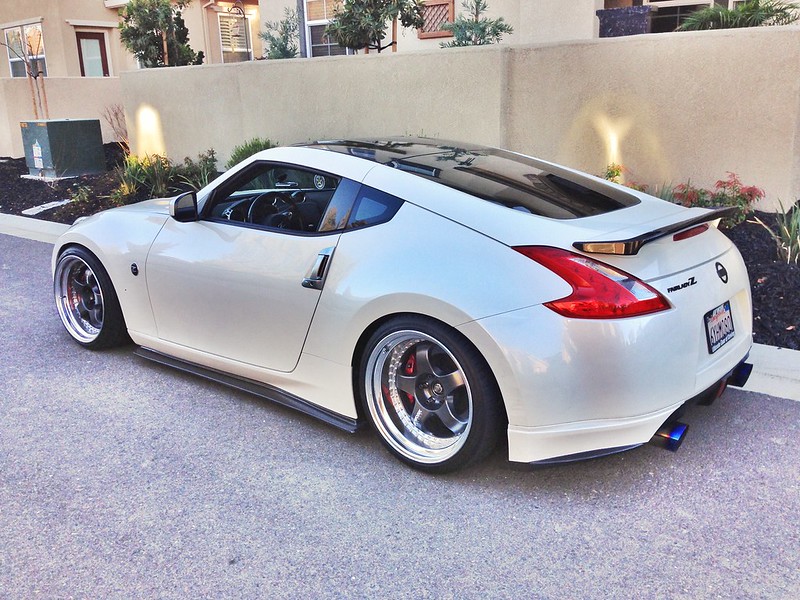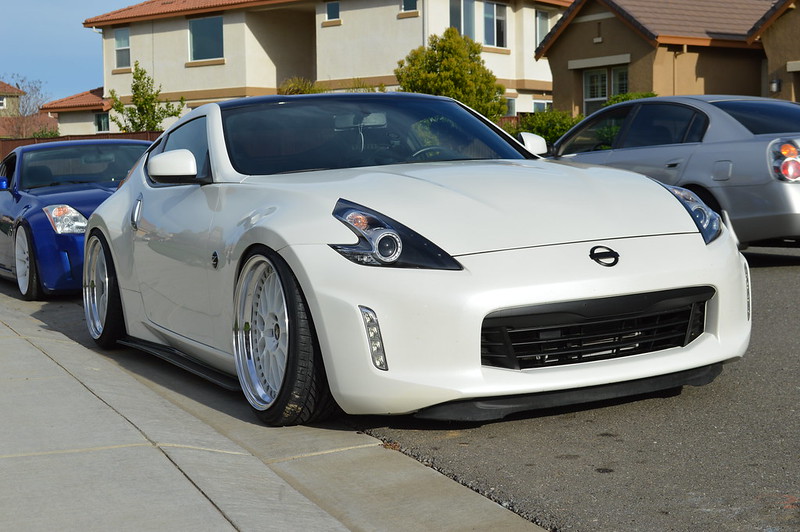Lastly, let's talk about camber. This diagram illustrates what camber is:

Camber is the "tilt" of the wheel, measured in degrees. 0 camber is a wheel that is straight up and down. As the top wheel moves inward, the measurement is a negative number; if the top of the wheel moves outward, the measurement is positive.
Folks freak out whenever camber is not 0. These folks are stupid. Negative camber is not bad. Negative camber does not "increase" tire wear. Negative camber helps a car turn; how much camber is good depends on your suspension and the type of driving you're doing. There's basically no situation when positive camber helps. Most cars will operate better with more camber in front. Negative camber will cause "uneven" wear (as more weight is put on the inside of the tire), but it doesn't really cause the wear to occur faster. Another alignment setting, "toe" is the actual camber killer when done excessively
Example:

Not a perfect example due to the exotic suspension, but look at the extreme negative camber of this Formula 1 car. They turn so hard and so fast in part due to camber (and many other factors). The point is simply that camber can be good when appropriately measured.
Forget this performance bullcrap tho. Camber is essential for wheel fitment when combined with the proper height, wheel width, offset, and tire size.
Consider Wiggin's old setup:

This is a front wheel setup of 20x10.5 +24, with a 285/35/20 tire, which a much more aggressive wheel spec and much wider/taller tire spec than stock (which is 19x9.5 +40, 245/40/19). How does he cram all that under the fender? Negative camber, which pushes the top of tire inward so it can clear the fender.
Wiggins is an unusual setup because he is running such a tall tire; he was forced to by a Toyo sponsorship. Nonetheless, it illustrates what is possible with the appropriate alignment - thats a pretty fatass tire, not much stretch, and it fits


CarbonFZ's white Z is probably a more practical example. I believe those the first pic is Work Meister, 19x10 +10 in front, or more aggressive. I forgot the specs of his white faced 20x10 VSXX. You can see the stretched tire and negative camber that allows him to clear the fender. He's running a static set up, so that height is what he drives at.
Again - you should know the general concepts of wheel size, tire size, and camber. As a practical matter, study what folks have done before so you get a ballpark of what is possible with what type of work.
In general, aggressive wheels require a simple formula:
Coilovers to adjust height
SPL Parts suspension arms to adjust camber and other settings
Aggressive wheel size
camber and tire to fit
(you should also roll your fenders. Pay a guy $100 and it'll be done)